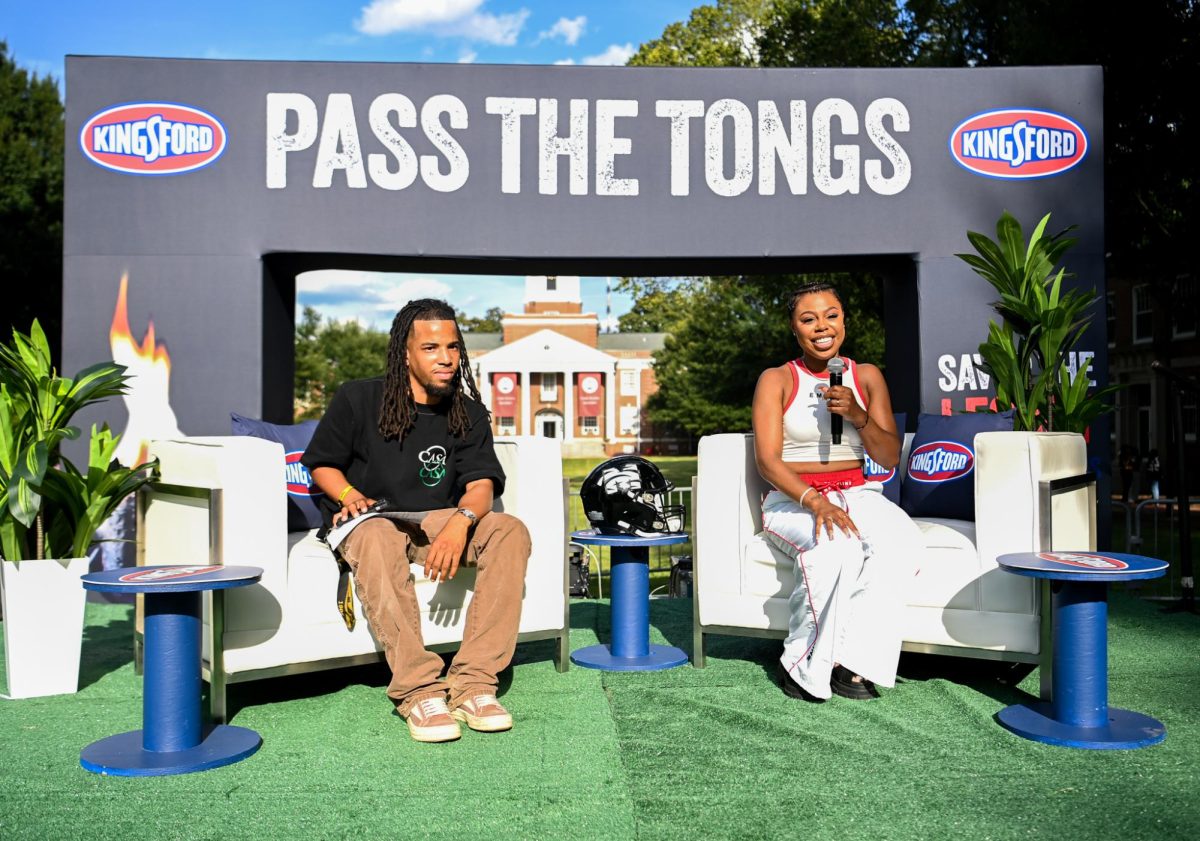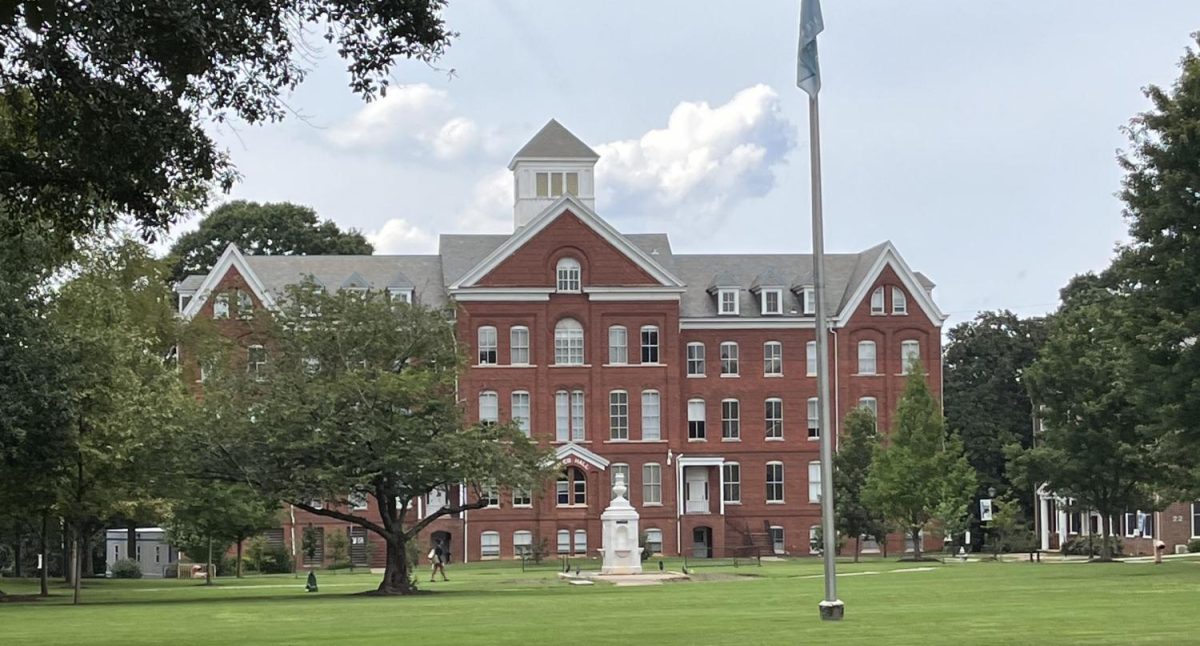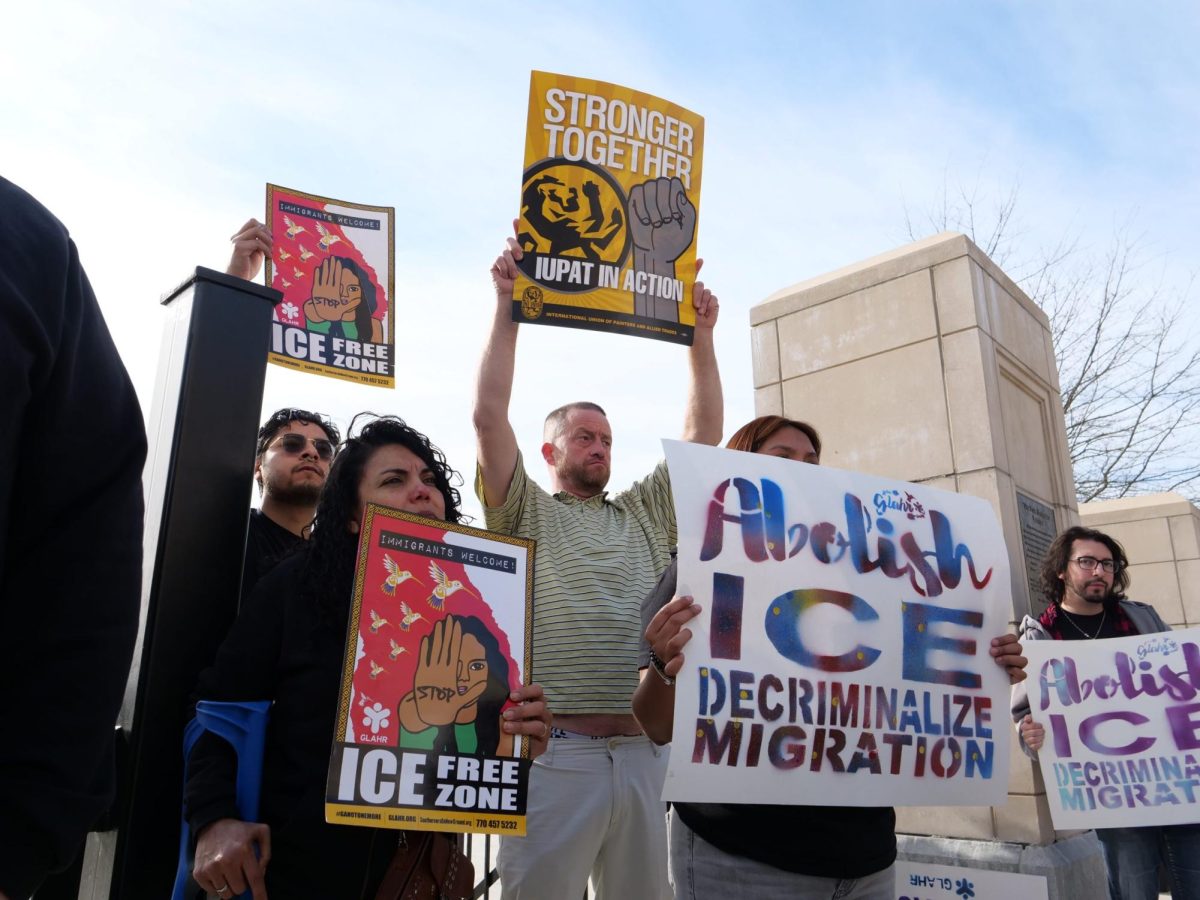In 2010, associate professor Richard J. Ellis and Willamette University graduate Mark Dedrick wrote an article critiquing the evolution of presidential campaign techniques titled “The Presidential Candidate, Then and Now.” They highlighted an essential element of campaigning that was relevant in 2010 and remains so in 2024: “Every presidential candidate is expected to crisscross this vast country in pursuit of votes. Would-be presidents do not stand for office; they run for it.”
Vice President and 2024 Democratic presidential candidate Kamala Harris is certainly running—armed with her advocacy for humble beginnings, women’s rights, a sharp and intelligent voice, classic Converse sneakers and … falling out of a coconut tree?
While Ellis and Dedrick highlighted the campaign strategies of past presidents during the 1980s and 1990s—such as Ronald Reagan’s 1984 “Morning in America” ad and in-person campaigning where candidates gave speeches, shook hands and met face-to-face—the efforts of those earlier candidates remain relevant today. Grassroots campaigning and door-to-door canvassing haven’t gone out of style.
Vice President Kamala Harris understands this and embraces traditional methods in her bid for the presidency. However, she also takes advantage of political progress and the social media revolution. From TikTok dances to viral memes, Harris’s 2024 campaign is a masterclass in using pop culture to sway Gen Z voters. By leveraging social media and celebrity influence, Harris is connecting with young voters, a critical demographic that could shape the outcome of the 2024 election.
The Atlanta University Center (AUC) student body—including Spelman College, Morehouse College, Clark Atlanta University and Morris Brown College—represents the demographic Kamala Harris targets. As Black students, they embody a rich history of political protest and advocacy for marginalized communities. The AUC has been an educational home to iconic political figures and social justice advocates like Stacey Abrams, Alice Walker and Martin Luther King Jr.
In an environment where political engagement and deep knowledge of this country’s societal dynamics are the norm, AUC students are positioned to influence the outcome of the 2024 election significantly. Their observations and responses to Harris’s campaign could shape this election and future political events.
Kamala Harris’s Social Media Strategy: Engaging Gen Z on Their Turf
TikTok: The Meme Factory for Political Campaigns
TikTok has become a crucial platform for Harris’s outreach, engaging younger voters with viral trends, humorous content and meme-worthy moments. Harris’s team has crafted posts that fit seamlessly into the platform’s culture. For example, the account “Kamala HQ” blends humor and political messaging to resonate with younger audiences. Laila R. Johnson, a sophomore and the Spelman College debate captain, says this strategy is effective: “For Kamala to really get out her policies on TikTok and people to understand who she is through TikTok on a more personal level, I think is really impactful.” She emphasizes the importance of using such platforms where “a lot of people … don’t get their news from traditional sources anymore.”
X (Formerly Twitter): Shaping the Political Narrative in 280 Characters
On X, Harris’s team uses concise, punchy updates to connect with audiences. This is where the campaign often responds to trending topics and engages in political debates. The platform is also crucial for amplifying celebrity endorsements and campaign updates. Dr. Dorian Brown Crosby, a political science professor, says this approach is strategic: “By reaching young voters on the platforms and through messaging that resonates with them, the first step of contact has been implemented.” She highlights that while social media helps initiate engagement, sustained efforts are needed to translate this into voter turnout.
Instagram: A Visual Showcase of Harris’s Campaign Persona
Harris’s Instagram feed offers a blend of political messages and personal moments, aiming to make the campaign more accessible. Reels and interactive stories have allowed her to reach younger audiences while maintaining a sense of authenticity. This strategy is particularly effective when complemented by celebrity endorsements, creating a dynamic appeal for the Gen Z demographic.
The Power of Celebrity Endorsements and Pop Culture References: Celebrity Endorsements: From Music Icons to Movie Stars
The campaign’s use of celebrity endorsements, including musicians and influencers, has played a significant role in connecting with young voters. Johnson reflects on this by mentioning the influence of figures like Taylor Swift: “When you look at Taylor Swift, like after she endorsed Kamala Harris, voter registration went up.” However, she also acknowledges that while such endorsements can have a notable impact, “there’s a group of people … more interested in trying to understand her policy instead of her personality.” This highlights the dual effect of celebrity backing, which can draw attention but may not fully sway undecided voters.
The Role of Pop Culture References in Harris’s Campaign
Harris’s campaign has effectively woven in pop culture references to make serious political messages more digestible. From dance challenges to appearances on popular podcasts, these moments allow her to connect with younger voters on a relatable level. Tiffany Billups, a sophomore health science major, shares her perspective: “I definitely think she’s reaching more audiences … And then as for celebrities having a presence in politics, I think it’s very important, because these people are qualified, not just millions, but billions of people.”
Kamala’s Media Persona: Relatable, Accessible, and Approachable: Crafting the Relatable Politician
A central element of Harris’s strategy is portraying her as a leader who understands the culture and concerns of younger generations. Viral moments, like her appearances on TikTok or engaging with popular trends, have made her seem more relatable. As Johnson puts it, “Now you know, having someone in that position who’s … making jokes that align with us … makes politics feel more personal to us.” Yet, balancing this relatability with a serious political message is no easy task, especially in the face of challenges like misinformation on social media.
Balancing Authenticity with Political Strategy
Harris’s campaign has had to navigate the challenge of appearing authentic while leveraging social media trends for political gains. Dr. Crosby reflects on the historical influence of pop culture in politics, stating that “Pop culture has always influenced U.S. politics … Today’s campaigns in the digital, social media and AI age continue to draw on pop culture to connect to various sectors of the electorate.” As Harris continues to reach out to young voters, the question remains whether this strategy will sustain its impact over time.
Harris’s Intended Audience: Gen Z and Their Political Power
The Political Power of Gen Z
Gen Z’s increasing voter turnout and engagement make them a pivotal demographic in the 2024 election. With their focus on social issues like climate change, social justice and economic equality, the alignment between Harris’s policies and Gen Z’s values is clear. Dr. Crosby says, “Generation Z is coming into its own as a part of the body politic … Vice President Harris’s campaign aligns with the values of Gen Z because she advocates for climate change, women’s rights and reproductive rights as healthcare.”
Harris’s Connection with Gen Z’s Values
Harris’s engagement on platforms like Instagram and TikTok is a deliberate move to align with Gen Z’s preferences for receiving information. Yet, as Na’Zyia S. Dowdy-Arnold, another AUC student, warns, the challenge of misinformation and AI’s role in shaping perceptions is significant: “There’s so much that can be misconstrued online, and with AI, you can manipulate images and words … How are we differentiating … what’s real and what’s fake?” This presents both an opportunity and a risk for campaigns using digital platforms.
The Psychology Behind Gen Z’s Engagement Through Pop Culture: Why Pop Culture Works as a Political Strategy
The psychological appeal of pop culture in politics lies in its ability to make content accessible and engaging. Using humor, visuals, and celebrity connections can enhance message retention among younger audiences, creating a sense of relatability. Dr. Crosby points out that “the images onscreen can help prepare society for accepting … elected officials,” emphasizing the role of media in shaping public perception.
The Future of Political Campaigning: Is Pop Culture Here to Stay?
As political campaigns continue to adapt to changing media landscapes, Harris’s approach may serve as a template for future candidates. Dowdy-Arnold suggests that social media’s role will only grow: “Social media will become even more a part of the election, a part of our government.” Yet, with this growth comes the responsibility of ensuring that voters remain informed and discerning.
Kamala Harris’s use of social media and pop culture references in the 2024 election showcases a modern approach to political engagement. For the students of the AUC, this strategy presents both an opportunity to see themselves represented and a challenge to stay informed amid evolving digital landscapes. As the election approaches, young voters are reminded of their crucial role in shaping the political future. Harris’s strategy has influenced the future of political campaigning and is holding Gen Z accountable for their role in American democracy.






